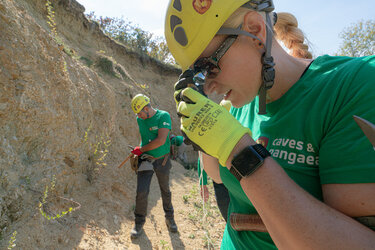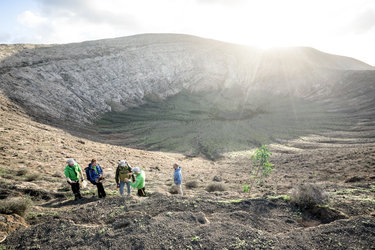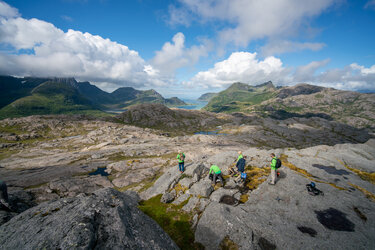Accept all cookies Accept only essential cookies See our Cookie Notice

About ESA
The European Space Agency (ESA) is Europe’s gateway to space. Its mission is to shape the development of Europe’s space capability and ensure that investment in space continues to deliver benefits to the citizens of Europe and the world.
Highlights
ESA - United space in Europe
This is ESA ESA facts Member States & Cooperating States Funding Director General Top management For Member State Delegations European vision European Space Policy ESA & EU Space Councils Responsibility & Sustainability Annual Report Calendar of meetings Corporate newsEstablishments & sites
ESA Headquarters ESA ESTEC ESA ESOC ESA ESRIN ESA EAC ESA ESAC Europe's Spaceport ESA ESEC ESA ECSAT Brussels Office Washington OfficeWorking with ESA
Business with ESA ESA Commercialisation Gateway Law at ESA Careers Cyber resilience at ESA IT at ESA Newsroom Partnerships Merchandising Licence Education Open Space Innovation Platform Integrity and Reporting Administrative Tribunal Health and SafetyMore about ESA
History ESA Historical Archives Exhibitions Publications Art & Culture ESA Merchandise Kids Diversity ESA Brand Centre ESA ChampionsLatest
Space in Member States
Find out more about space activities in our 23 Member States, and understand how ESA works together with their national agencies, institutions and organisations.
Science & Exploration
Exploring our Solar System and unlocking the secrets of the Universe
Go to topicAstronauts
Missions
Juice Euclid Webb Solar Orbiter BepiColombo Gaia ExoMars Cheops Exoplanet missions More missionsActivities
International Space Station Orion service module Gateway Concordia Caves & Pangaea BenefitsSpace Safety
Protecting life and infrastructure on Earth and in orbit
Go to topicAsteroids
Asteroids and Planetary Defence Asteroid danger explained Flyeye telescope: asteroid detection Hera mission: asteroid deflection Near-Earth Object Coordination CentreSpace junk
About space debris Space debris by the numbers Space Environment Report In space refuelling, refurbishing and removingSafety from space
Clean Space ecodesign Zero Debris Technologies Space for Earth Supporting Sustainable DevelopmentLatest
Applications
Using space to benefit citizens and meet future challenges on Earth
Go to topicObserving the Earth
Observing the Earth Future EO Copernicus Meteorology Space for our climate Satellite missionsCommercialisation
ESA Commercialisation Gateway Open Space Innovation Platform Business Incubation ESA Space SolutionsLatest
Enabling & Support
Making space accessible and developing the technologies for the future
Go to topicBuilding missions
Space Engineering and Technology Test centre Laboratories Concurrent Design Facility Preparing for the future Shaping the Future Discovery and Preparation Advanced Concepts TeamSpace transportation
Space Transportation Ariane Vega Space Rider Future space transportation Boost! Europe's Spaceport Launches from Europe's Spaceport from 2012Latest

Moon scouts
Thank you for liking
You have already liked this page, you can only like it once!
Three astronauts from three space agencies are at work looking for interesting rocks at the rim of a volcanic crater in Lanzarote, Spain. From left to right, NASA astronaut candidate Jessica Wittner, Takuya Onishi from Japan’s space agency JAXA and ESA astronaut Thomas Pesquet document samples during a simulated expedition on another planetary body.
The crew stands at the top of an ancient volcano called Caldera Blanca. The remnants of magma eruptions from hundreds of thousands of years ago helped the astronauts in the search for samples from the Earth’s interior. The island of Lanzarote is one leg of ESA’s geology course PANGAEA, now running its sixth edition.
“Among craters and solidified lava flows, this is a very special place that does not look like Earth at all. You can easily picture yourself wearing a spacesuit and walking on the Moon or Mars,” says Thomas, who admitted to having discovered a new passion for geology.
The astronauts do not wear spacesuits during these field trips but are equipped with a kit for sample collection and scientific analysis. Rock hammers at hand, the trainees carry spectrometers and microscopes connected with the all-in-one tool for future space explorers – the Electronic Field Book. The crew took up different roles and swapped responsibilities as part of the training.
The training course took the rookie geologists from theory-packed lessons to the wild outdoors in locations across Europe, such as the Bletterbach canyon in Italy and the Ries crater in Germany. The astronauts learned to document their findings, to understand the geology behind a landscape, and to unlock unanswered questions about the history of Earth, the Moon and Mars.
Follow the latest news about PANGAEA on the blog and follow their steps with our Flickr gallery.
-
CREDIT
ESA – A. Romeo -
LICENCE
ESA Standard Licence

PANGAEA VR

NASA astronaut Kate Rubins during PANGAEA geology training

Pangaea expedition to Montaña Blanca

Geological training in terrestrial Moon and Mars ana…















 Germany
Germany
 Austria
Austria
 Belgium
Belgium
 Denmark
Denmark
 Spain
Spain
 Estonia
Estonia
 Finland
Finland
 France
France
 Greece
Greece
 Hungary
Hungary
 Ireland
Ireland
 Italy
Italy
 Luxembourg
Luxembourg
 Norway
Norway
 The Netherlands
The Netherlands
 Poland
Poland
 Portugal
Portugal
 Czechia
Czechia
 Romania
Romania
 United Kingdom
United Kingdom
 Slovenia
Slovenia
 Sweden
Sweden
 Switzerland
Switzerland

























